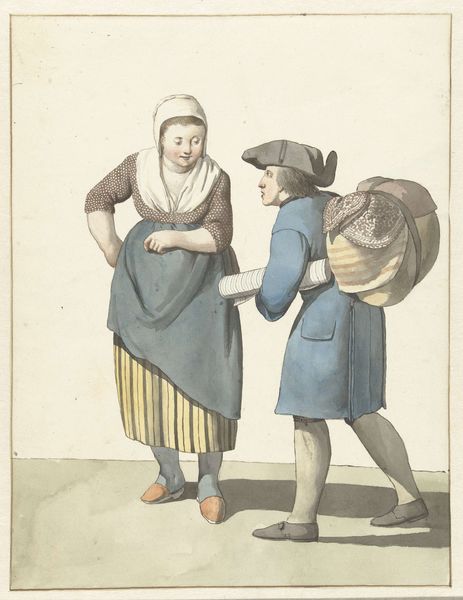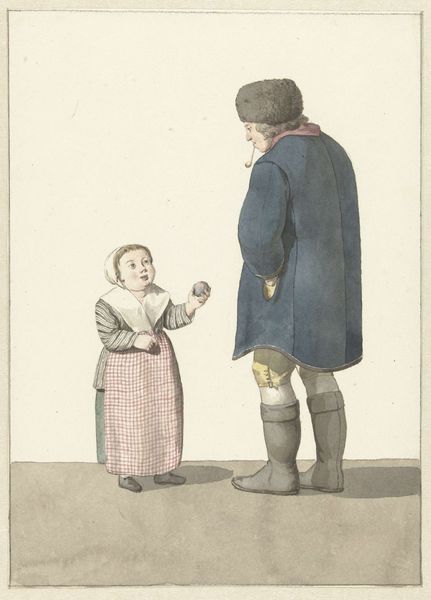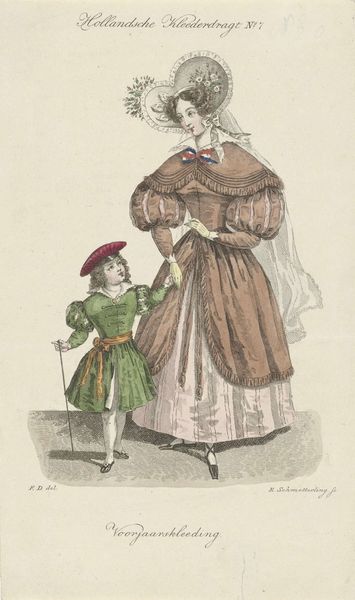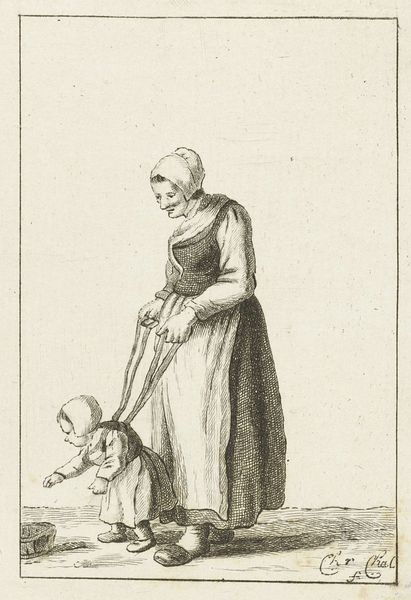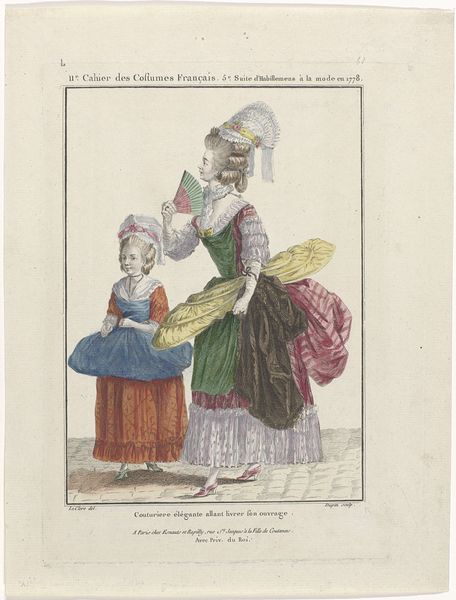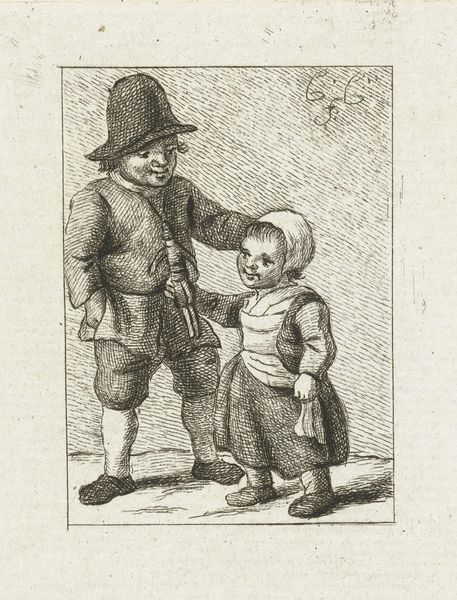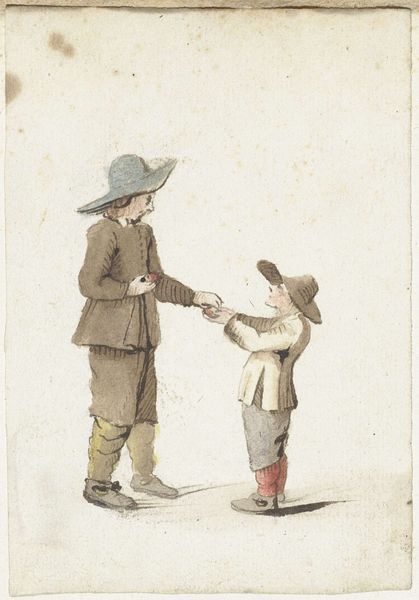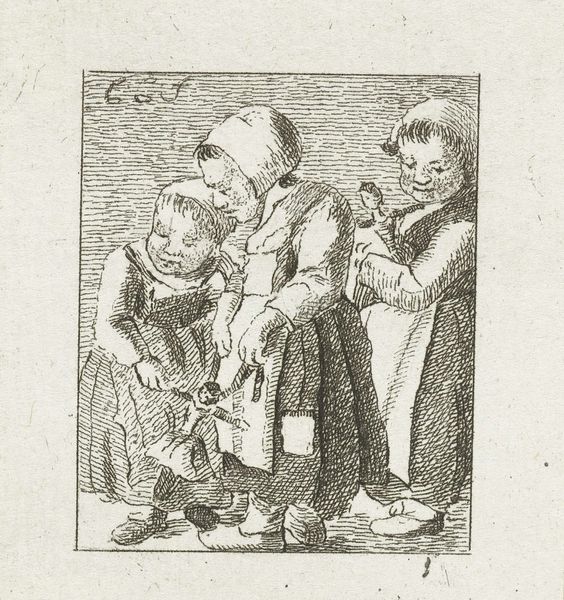
drawing, watercolor
#
portrait
#
drawing
#
caricature
#
watercolor
#
portrait drawing
#
watercolour illustration
#
genre-painting
#
history-painting
Dimensions: height 202 mm, width 144 mm
Copyright: Rijks Museum: Open Domain
Curator: This watercolor and drawing, "Twee tegenover elkaar staande meisjes", created sometime between 1700 and 1800 by W. Barthautz, offers an intriguing, almost confrontational scene. What's your first impression? Editor: Stark. There’s something undeniably tense about the positioning of these two figures; the index fingers create these very direct lines of conflict that almost pin the subject like a butterfly. Curator: Absolutely, the directional lines formed by those pointing fingers are quite arresting. Structurally, it funnels our focus onto the young woman receiving the dressing-down. Notice the restricted palette. It’s composed with very careful and limited color choices: pale blues, yellows, and grays to create tonal unity that highlights the linear aspects of the composition. Editor: Yes, it all feels symbolic. We have this older figure, presumably of authority—represented with this darker palette—her dark skirt looming, visually outweighing the paler subject of her ire. And is it anger we're witnessing, or perhaps concern? These gestures, this pose, could indicate the transmission of folk wisdom, the warnings of experience. Curator: An intriguing interpretation! It could also be about balance – notice how Barthautz employs patterns to offset areas of color? For instance, the stripes on the elder figure’s shirt converse with the polka dots on the girl’s jacket. Editor: Ah, I see what you mean. So rather than simple scolding, we might consider this moment as a rite of passage. Her youthful innocence on the brink. This scene feels less individual, and more archetypal. Are we, perhaps, observing a time capsule, capturing some specific Dutch cultural expectations for women? Curator: An astute question. Looking again at the figures, I see elements of caricature – which softens, but also distorts the figures, adding an enigmatic touch. What this contributes to the semiotics here is difficult to pin down, however. Editor: Yes, ultimately we are left only to ponder. As compelling as this genre-like painting is, it almost has a sort of uncanny emotional transparency, letting our thoughts roam free, through an event captured and coded long ago. Curator: Agreed. A lot to consider indeed, in this small scene—one that remains both peculiar and quite thought-provoking.
Comments
No comments
Be the first to comment and join the conversation on the ultimate creative platform.
